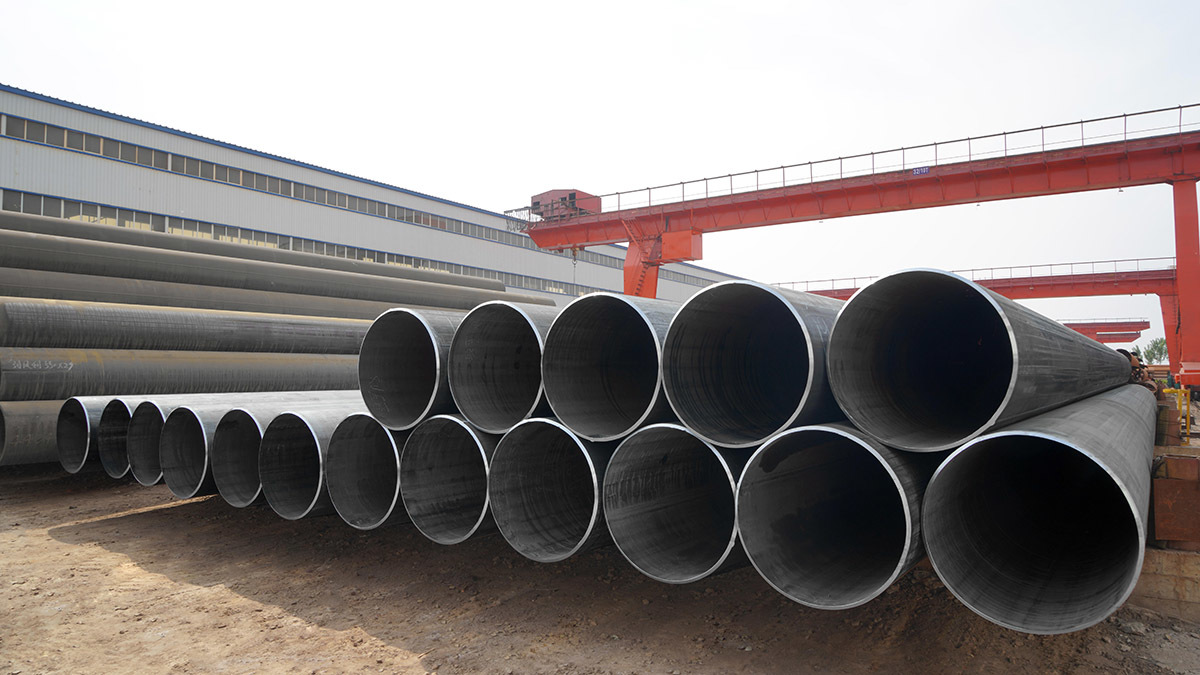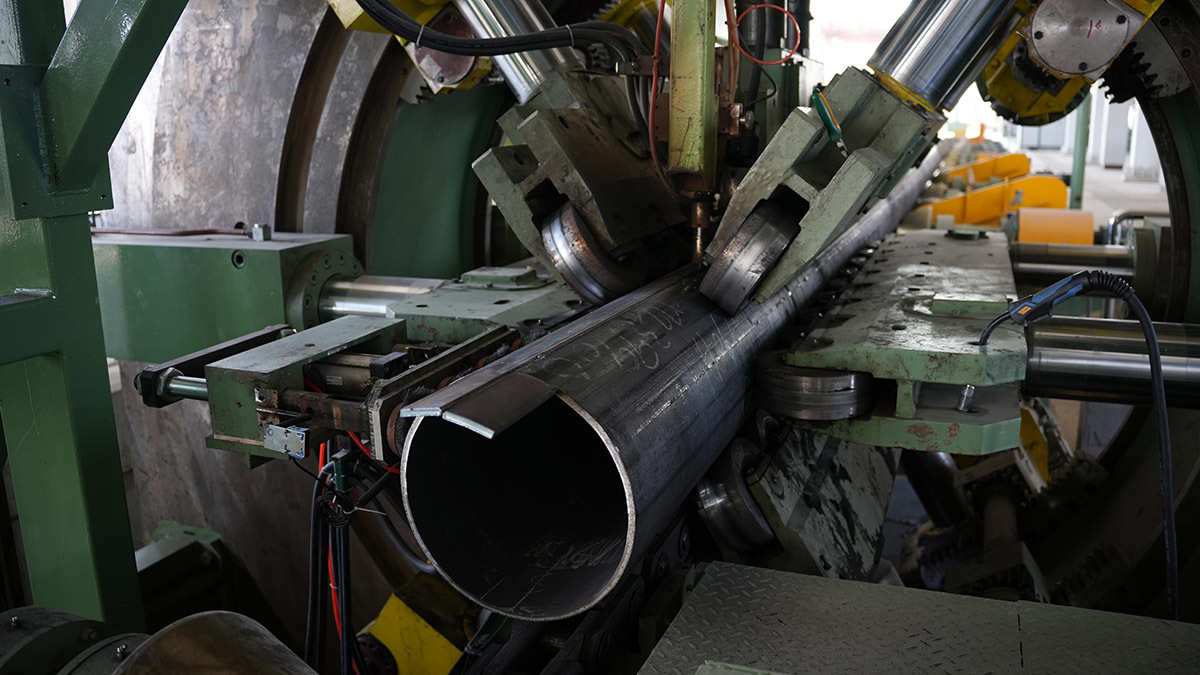Selecting the appropriate square steel pipe for your project involves considering various factors to ensure the pipe meets the required specifications and performs its intended function effectively. Here is a guide to help you make the right choice:

State-Owned professional exporter of different specifications of steel pipes including ERW WELDED PIPES, GI PIPES, HOT DIP GALVANISING, SEAMLESS PIPES, STEEL CONDUIT, LSAW PIPES, SSAW PIPES, SQUARE&RECTANGULAR PIPES, SPIRAL PIPES etc. Email: sigrid.tjtewoo@gmail.com Whatsapp: +1-6303406276 Wechat: sigridexporting
Our Product Catagories(5)
1. Square Steel Tubing
Size: 20*20-500*500mm or as the requirement,
large size steel tube above 500*500 can be produced.
Thickness: 1.3-40mm or as the requirement
Length: 5.8m/6m/12m or as the requirement
2. Curtain Wall Glazing Tube
Size: 20*20-500*500mm or as the requirement,
large size steel tube above 500*500 can be produced.
Thickness: 1.3-40mm or as the requirement
Length: 5.8m/6m/12m or as the requirement
3. Hexagon Metal Tube
Raw material carbon steel, size and quality to be produced as designed.
4. Right Angle Tube
Size:20*20-500*500mm or as the requirement,
large size steel tube above 500*500 can be produced.
Thickness:1.3-40mm or as the requirement
Length:5.8m/6m/12m or as the requirement
Our Product Catagories(4)
1. LSAW Welded Pipe
Outer Diameter: 5mm-630mm
Thickness: 0.25mm-75mm
Length: 6-12m
2. SSAW Pipe
Outer Diameter: 219-2200mm
Wall thickness: 6.5-20.0mm
Length: 6-12m
3. Hot Dip Galvanising
Outer Diameter: Square 10*10-1000*1000mm
Rectangular:10*15-800*1100mm
Round:10.3mm-609mm
Thickness: 0.5-60mm
Length: 3-12m according to client requirement
4. Shape Tube
Different shapes, outer diameters, wall thicknesses, and lengths can be customized.
Our Product Catagories(3)
1. ERW Pipe
Thickness: 0.6 - 6 mm
Length: 6-12 m
Processing Service: Welding, Punching, Cutting, Bending, Decoiling
2. LSAW Steel Pipe
Outer Diameter: 5mm-630mm
Thickness: 0.25mm-75mm
Length: 6-12m
3. Square Tube
Size: 20*20-500*500mm or as the requirement,
large size steel tube above 500*500 can be produced.
Thickness: 1.3-40mm or as the requirement
Length: 5.8m/6m/12m or as the requirement
4. Curtain Wall Steel Tube
Size: 20*20-500*500mm or as the requirement,
large size steel tube above 500*500 can be produced.
Thickness: 1.3-40mm or as the requirement
Length: 5.8m/6m/12m or as the requirement
Our Product Catagories(2)
1. Square Tubing
Size: 20*20-500*500mm or as the requirement,
large size steel tube above 500*500 can be produced.
Thickness: 1.3-40mm or as the requirement
Length: 5.8m/6m/12m or as the requirement
2. ERW Welded Carbon Steel Pipe
Thickness: 0.6 - 6 mm
Length: 6-12 m
Processing Service: Welding, Punching, Cutting, Bending, Decoiling
3. GI Pipe
Outer Diameter:13-266.6mm
Thickness:0.5-2.5mm
Length:1-12m
4. EN10219 S355J2H LSAW Pipe
Outer Diameter: 5mm-630mm
Thickness: 0.25mm-75mm
Length: 6-12m
Our Product Catagories(1)
1. Circular Hollow
Sections
Description
Standards: BS, GB, BS EN
10297, BS EN10025, BS EN10217, BS EN10219, BS EN10296, GB/T 13793-1992, GB/T
14291-2006
Grade: Q195-Q345, Q195, Q215,
Q235
Thickness: 0.8 - 18mm (SCH30,
SCH40, STD, XS, SCH80, SCH160, XXS)
Section shape: round
Outer diameter:1/2-18” (20-457mm)
Application: structure pipe
Technique: ERW
Alloy or not: non-alloy
Ends: plain ends/threading
ends/bevelled
Packing: bundles/PVC cover
bundle
Usages: conveying gas,
structural steel pipes purpose
2. Circular Hollow Section2
Name: Rectangular hollow
sections
Standard: ASTM A500, JIS
G3466, EN10219, DIN2240, BS1387, AS1163.
Main steel tube grade: A.B.C,
Q195, Q215, Q235, Q355
Specification: 20*30*1.2mm to
400*600*40mm
3. Seamless Steel Pipe
Wall Thickness:10-50mm
Length:1-24m or as the
requirement
External diameter:6-820mm
4. Industrial Square Steel
Pipe
Size: 20*20-500*500mm or as
the requirement,
large size steel tube above
500*500 can be produced.
Thickness: 1.3-40mm or as the
requirement
Length: 5.8m/6m/12m or as the
requirement
How To Find A Right Company To Purchase Steel Pipes
In the current economic environment, consumption downgrade has become a common phenomenon. When enterprises purchase steel pipes, the increase in costs will undoubtedly increase the operating pressure. So, how to find the right factory under the premise of ensuring quality? This article will explore this issue in detail to help you make informed decisions in steel pipe procurement.
1. understanding of steel pipe market status
First of all, we need to understand the current situation of the steel pipe market. With the rise of raw material prices and the strict implementation of environmental protection policies, the production cost of steel pipes has increased significantly. This has led to a general increase in the price of steel pipes on the market. Faced with such a market environment, companies need to be more careful in selecting suppliers to ensure that they control costs while ensuring product quality.
2. looking for the source factory
In the procurement of steel pipes, it is very important to find the source factory. The source factory can not only provide more competitive prices, but also ensure product quality. Here are a few key factors in choosing a source plant:
1. Production capacity
Source factories usually have strong production capacity and can meet the needs of large-scale orders. When choosing a factory, the company should examine its production equipment, the number of production lines, and the production process to ensure that it can deliver high-quality products on time.

2. Sheet quality
The quality of the plate directly affects the quality of the finished product of the steel pipe. Therefore, when selecting the source factory, the enterprise should focus on its plate supply channels and quality control system to ensure the stable and reliable plate quality.
3. Deep processing custom services
Many enterprises in the procurement of steel pipe, the need for deep processing custom services.

3. Conclusion
Under the dual pressure of consumption degradation and steel pipe cost increase, enterprises need to take effective measures to find a suitable source factory to ensure the quality and cost control of steel pipe procurement.
All Records Of The Exhibitions Of Tianjin Tewoo, In-Depth Understanding Of New Trends In The Global Market
Under the background of economic globalization, international cooperation between enterprises has become a key force to promote the development of the industry, especially in the field of heavy industry. International exhibitions provide an excellent platform to showcase technological innovations and expand business relationships. Recently, we have participated several domestic and international exhibitions.
We have made a great progress and received more than 500 customers. This not oly demonstrates our industry leadership, but also marks our further expansion in the international market.
Exhibition is a platform for direct communication with international buyers, which allows us to understand the latest development in the market and the specific needs of customers.
This information will provide data support and direction guidance for our future market strategy adjustment. Through continuous participation in exhibitions, We are gradually establishing a solid international customer network, injecting fresh vitality and power into our long-term development.
Holiday Note
We are going to take Chinese holiday from 1st Oct to 7th Oct. During this period, our factory manufactuing lines are still working. Please leave us message here or email us: sigrid.tjtewoo@gmail.com if you have any inquiries.
Good News: Participation Of Tube China 2024
Good news:
My company will attend TUBE CHINA 2024 on 25th-28th Sep.
Sincerely welcome to visit us then and welcome to meet you in the exhibition.
Our main products:
Square&Rectangular Pipes
ERW Pipes
Steel Conduit
Seamless Pipes
Steel Plates&Coils
Our Main Manufacturing Products--Square&Rectangular Pipes
As a state-owned manufacturing and exporting company with a more than 30 years history in the field of steel products, our main products are various specifications of square&rectangular pipes. We also provide customized specifications, coating and other customization services on demand. Some of the specifications (all ISO-9001) are listed below (HS CODE: 73066100):
Other products like seamless pipes, steel conduit, ERW pipes, steel coils&plates are all included in our exporting list. Sincerely welcome&consult us now.
Email: sigrid.tjtewoo@gmail.com
Whatsapp: +1-6303406276
How To Select Qualified Square&Rectangular Pipe
Selecting the appropriate square steel pipe for your project involves considering various factors to ensure the pipe meets the required sp...

-
The uses of steel coils are diverse and wide-ranging. These steel sheets are versatile in that they are used in many industries, for diffe...
-
We, Tianjin Tewoo, have succeeded in building a lot of complex constructions, so we have accumulated sufficient knowledge of different typ...
-
Are you still confusing how to distinguish between steel pipe and steel tube? We, Tewoo, can help you to make clear and we are here to help ...






